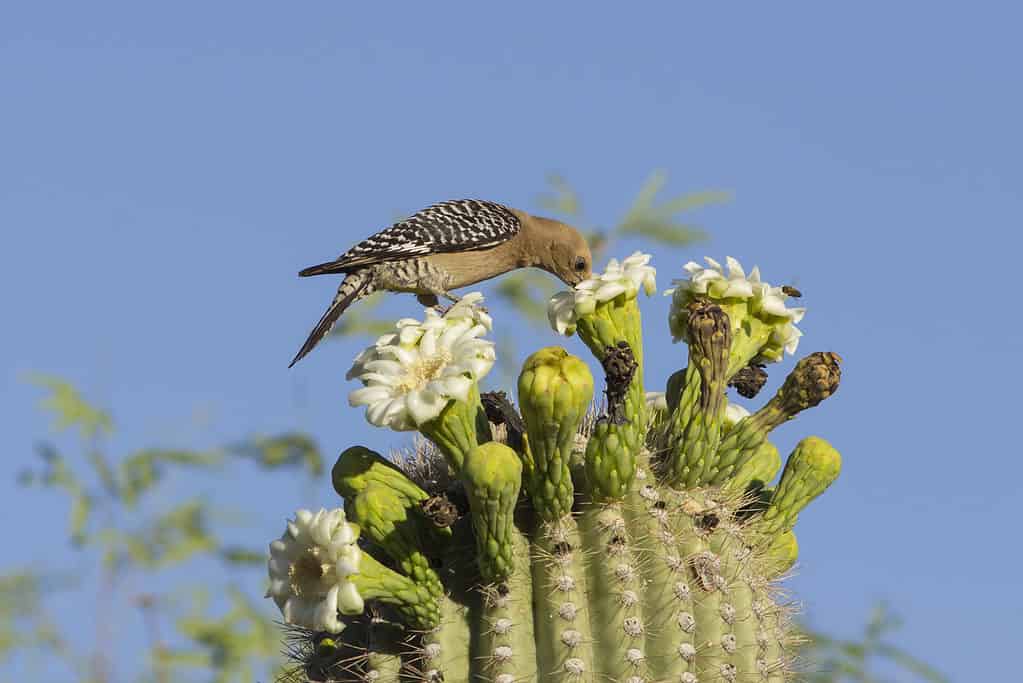We’ve all probably heard about “the birds and the bees” at some point in our lives. Parents most often use this cheesy phrase to open up a conversation about sex and reproduction with their children. Although this is a common metaphor, it doesn’t do a very good job of helping to explain the concept. Nevertheless, the euphemism has stood the test of time.
Where did this odd phrase come from, though, and when did it originate? How did birds and bees become synonymous with sex? In this article, we’ll explore the possible origins of the phrase and look at some of its uses in popular culture.
“The Birds and the Bees” — Possible Origins

©Cavan-Images/Shutterstock.com
The origins of “the birds and the bees” as a turn of phrase are hard to pin down. Clearly, the imagery works well enough to open up an awkward discussion about sex, but when did people start to use the phrase in this way? There are a couple of 19th-century sources that are often thought to have influenced its use.
“Work Without Hope”
One of the earlier recorded literary pairings of birds and bees appears in Samuel Coleridge Taylor’s poem “Work Without Hope”, which he wrote in 1825. The verses are as follows:
All Nature seems at work. Slugs leave their lair —
The bees are stirring—birds are on the wing—
And winter slumbering in the open air,
Wears on his smiling face a dream of spring!
And I the while, the sole unbusy thing,
Nor honey make, nor pair, not build, not sing.
Though not explicit, the poem is a pretty clear reference to love and reproduction. The awakening of spring, the pairing and nesting birds, and the bees busily making honey to support their growing hive all serve to drive the point.
“Birds and Bees, Sharp Eyes and Other Papers”

In this work, Burroughs describes his observations of the natural behaviors of the animals that surround him.
©iStock.com/tntphototravis
Several decades later, an American naturalist by the name of John Burroughs published his work titled “Birds and Bees, Sharp Eyes, and other Papers”. In this work, Burroughs describes his observations of the natural behaviors of the animals that surround him. He weaves stories of birds and bees—their day-to-day behaviors, their enemies, their reproduction—all in simple ways that Mary Burt, the writer of the work’s introduction, says that her schoolchildren had been very receptive to.
This may explain the use of “the birds and the bees” to symbolize sexual reproduction. However, Burroughs’ work does not explicitly use the pair of animals to refer to sex and it does not focus on sexual education. The particular work may, however, have set the stage for the use of the idiom as a reference to the common facts of life.
Modern Uses
How the phrase gained such popularity isn’t easy to determine. It is pretty clear, however, that people took to its use readily. There are dozens of songs that use the phrase specifically. It also saw frequent use in popular culture, news clippings, and in public communications throughout the early 1900s.
One early use of the phrase in music occurred in 1928 when Cole Porter released the song “Let’s Do It, Let’s Fall in Love”. In it, the following lines appear:
Birds do it, bees do it
Even educated fleas do it
Let’s do it, let’s fall in love
This song found popularity in Porter’s first successful musical Paris, which gave the song its debut. The following year, Bing Crosby and the Dorsey Brothers Orchestra covered the song. Though some of the original lyrics are incredibly outdated, the gist of the song is clear.
Several decades later, the popular T.V. show “The Simpsons” would highlight the absurdity of the phrase’s use in explaining sex to children, who are plenty capable of understanding the concept directly. During one episode, Bart says “The sun is out, birds are singing, bees are trying to have sex with them — as is my understanding”. This shows that, at age 10, Bart already understands what sex is and that “the birds and the bees” as a way of explaining the concept is comically useless.
Examples of Everyday Use
Aside from the sex talk that parents give their children, “the birds and the bees” finds use in other contexts. In polite company or around children, people will often use the phrase to reference sex without being direct. People may also use the euphemism when they are uncomfortable discussing the subject in front of colleagues, relatives, or in front of audiences.
The photo featured at the top of this post is © Daniel Prudek/Shutterstock.com
Thank you for reading! Have some feedback for us? Contact the AZ Animals editorial team.







